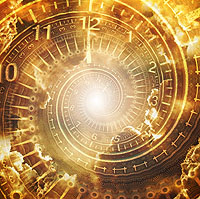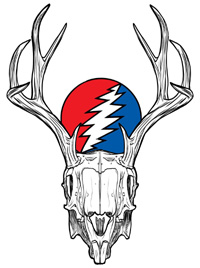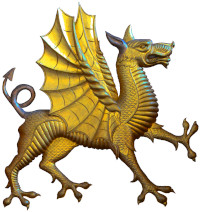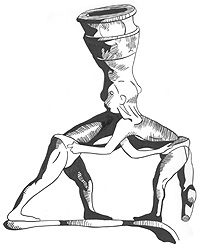Reading from Marchers of Valhalla, Berkeley, 1978, pages 7-52
Howard wrote two different versions of this novelette on the battle of Clontarff, where the Vikings’ “Iron reign was ended” in Ireland. This battle between his Gaelic ancestors and the fierce Norsemen was masterfully done in that the lowest Irishman, a slave, is the primary viewpoint character and protagonist. “Conn the thrall,” Irish renegade and escaped Vikings slave, who is more heavily featured in Spears of Clontarf, is a perfect, bestial hero for Howard, wholly uncultivated and unbowed, nearly an apeman. The other major thread is the presence of The Grey God, Odin, who comes to see the demise of his kind with his one eye, his gaping socket seeing deeper things under heaven, in such a manner as the reader is to understand that Clontarf [1]is, for Howard, Ragnarok. [2]
Conn and Odin mark the two threads converging from the spindle upon the loom of war that weaves doomful fate for man. The language of Beowulf is invoked deeply, it seems to this reader, though I do not know if Howard read Beowulf. If he had not, then the case for his channeling carries at least a wisp of weight. This story, steeped in power, as Howard understood that God and god were power and power-divided, begins with a meeting between the lowliest and the mightiest, who then stalk separately among the doombefallen world of men:
“Well, Conn, thrall of Wolfgar Snorri’s Son, whither do you flee, with your master’s blood on your hands?”
“I know you not,” growled Conn, “nor how you know me. If you would take me, whistle up your dogs [3] and make an end. Some of them will taste steel ere I die.”
“Fool!” there was deep scorn in the reverberant tone. “I am no hunter of runaway serfs. There are wilder matters abroad. What do you smell in the sea wind?”
Odin, Conn not guessing his nature until later, then goes on, describing his elemental sensation of strife among men welling up to drag down their gods. So realistically does Howard portray the pagan ideal that a god does not meddle like some mother-in-law in the lives of men, but looks upon them as a lesser life form, aloof and powerful, awesome yet ultimately mortal, that the grey-bearded stranger with one eye waxes terribly authentic on the yellowed page. Odin, with a grinding sensuality, describes the great shadows of doom that stalk across the world at the end of an age and then Conn flees in terror as the god transforms from his mortal guise to a pillar of grey cloud.
In The Grey God Passes, there is a savage, conniving queen, brutal warlords, duplicitous chieftains and a hero king and brave men to spare by the thousands. But there are two very humane figures Howard inserts. One is a secondary perspective character, Eevin of Craglea, a weird woman of a nearly vanished elder race, essentially an elf, as Tolkien would have depicted her, but in Howard’s hand the sorrow of her passing kind is more apparent. This woman is in love with an Irish chieftain, Dunlang, who is doomed to fall. She insists that Conn dress her lover in an ancient suit of gladiator armor that her people had safeguarded as a trophy since the days of Rome. Eevin is a pitiful creature and a messenger of doom more compelling for her clear-eyed innocence. The evil queen fears her with abject terror.
In one scene Eevin speaks with King Brian:
“But it is not of my woes I came to speak, my Lord,” she continued wearily. “It is not the way of the Dark People to take part in the quarrels of the Tall Folk—but I love one of them.”
That one of Howard’s most-rounded masterpieces, is stalked by a weird woman, a whore queen, a dozen and more brutal, bloody-handed lords, and a passing god, could not be sold in either version says something less about his time than we readers of his generally think of it. The Grey God Passes [4] marks Howard as a man out of time with his age as keenly as Almuric did, but in a defter hand.
Notes
1. The Battle of Contarf:
link › battleofclontarf.net
2. Ragnarok:
3. Certainly an inspired Southern image gathered from his family’s own regional history, where, from Mississippi to East Texas, up through his time, dogs were commonly employed to hunt for escaped convicts as earlier they had slaves. Conn is the image of the convict rather than the circumstantial slave, as he fell into Norse hands as a result of being banished by King Brian over a feud matter.
4. Howard’s image of Odin in mortal guise has much in common with Tolkien’s image of Gandalf the Grey.
A Well of Heroes











a good post about norse mythology
i suggest you to read about viking symbols here viking-store.com/blogs/viking-norse-mythology/symbole-viking
Thanks for the link.